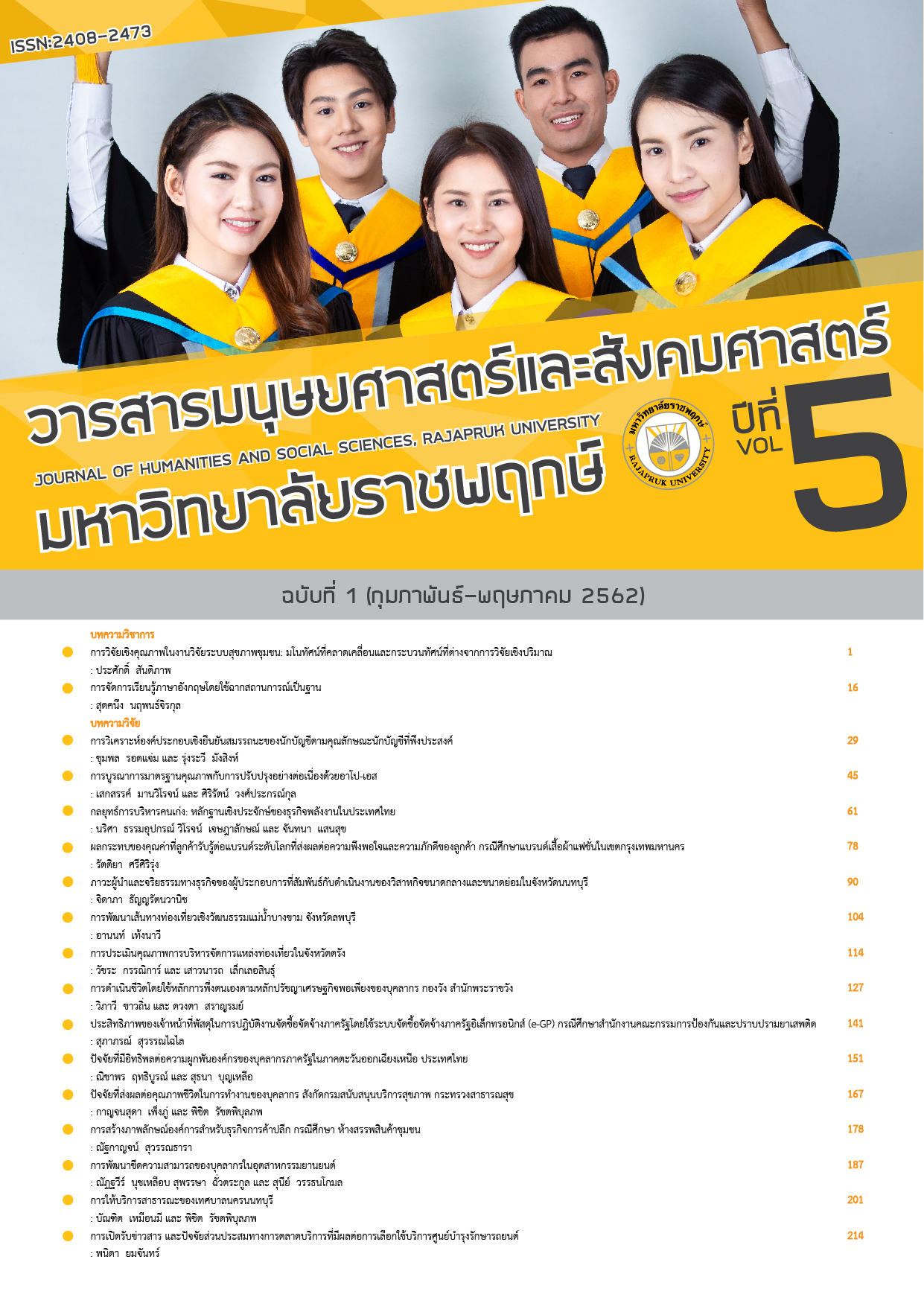Integrating Quality Standards into Continual Improvement with the APO-S
Main Article Content
Abstract
In case that the organization has adopted a variety of quality standards such as ISO 9001: 2015, public hearing, and COSO ERM for risk management and Internal control which make staff feel confusing and do not understand. Especially if those quality works are separated from the routine. Those problems may be burdensome, and staff could not apply quality work to enhance the performance. Therefore, the researcher was interested to study the systematic approach to integrate quality standards into continual improvement. In this research found that according to Sigma Sigma's DMADV design principles and Demarest's knowledge management principles were applied to design an integrating quality-standards into continual-improvement process, named the APO-S and get started in 2017. The results showed how staff competencies for monitoring and evaluating were improved comparing between 2017 and 2018. We found that the number of offices willing to participate in this process increased from 82.35% to 100%. The number of proposed improvements increased from 29 issues to 147 issues and the number of PDCA committees increased from 5 to 35 people. The results of knowledge management and sharing found that the A3 and R2R reports increased from 30 issues to 75 issues, and the number of outstanding reports increased from 7 issues to 21 issues and 5 excellent A3 writing. In conclusion, the APO-S process could drive qualities into implementation through staff involvement. All staff must keep improving and increasing productivity. In addition, the APO-S process could be a knowledge management mechanism for construction, dissemination, use, and embodiment.
Article Details
References
ศิริรัตน์ วงศ์ประกรณ์กุล. (2560). การจัดทำข้อเสนอเชิงนโยบายด้วยดัชนีวัดความภักดีของลูกค้า. วารสารมนุษยศาสตร์และสังคมศาสตร์ มหาวิทยาลัยราชพฤกษ์, 3(4): 56 - 68.
Demarest, M. (1997). Understanding knowledge management. Journal of Long Range Planning, 30(3): 374 - 384.
Faculty of Medicine Siriraj Hospital Mahidol University (2016). Knowledge Management: The integration. Retrieve 30 May 2018, from http://www.si. Mahidol. http://ww1.si.mahidol.ac.th/km/node/2287 (in Thai)
Pande, S.P., Neuman, P.R., and Cavanagh, R.R. (2001). The Six Sigma Way Team Fieldbook: An Implementation Guide for Process Improvement Teams. New York: McGraw-Hill.
Wongprakornkul, S. (2017). Policy Proposal from Customer Royalty Index. Journal of Humanities and Social Sciences Rajapruk University, 3(2): 56 - 68 (in Thai)


